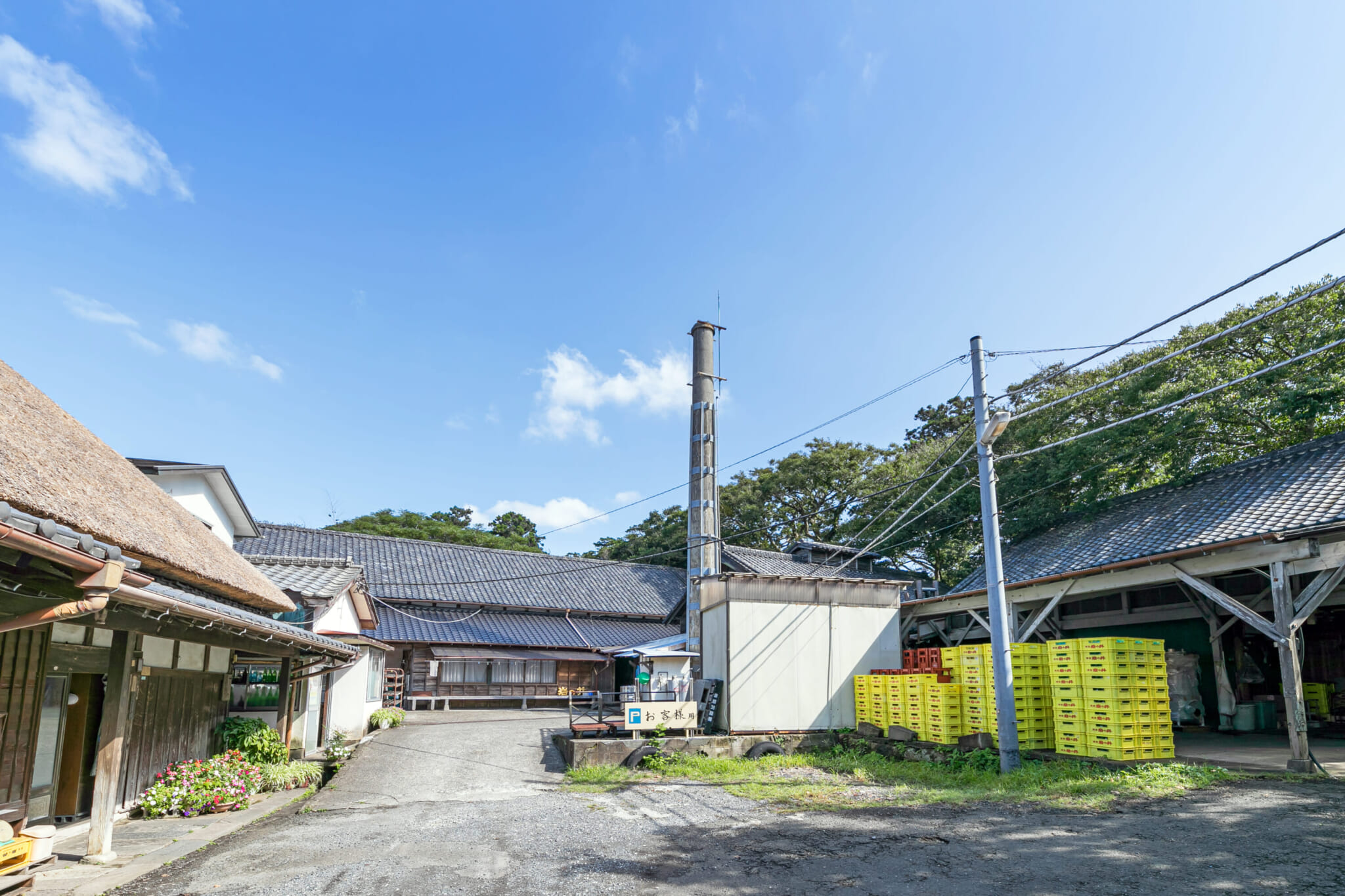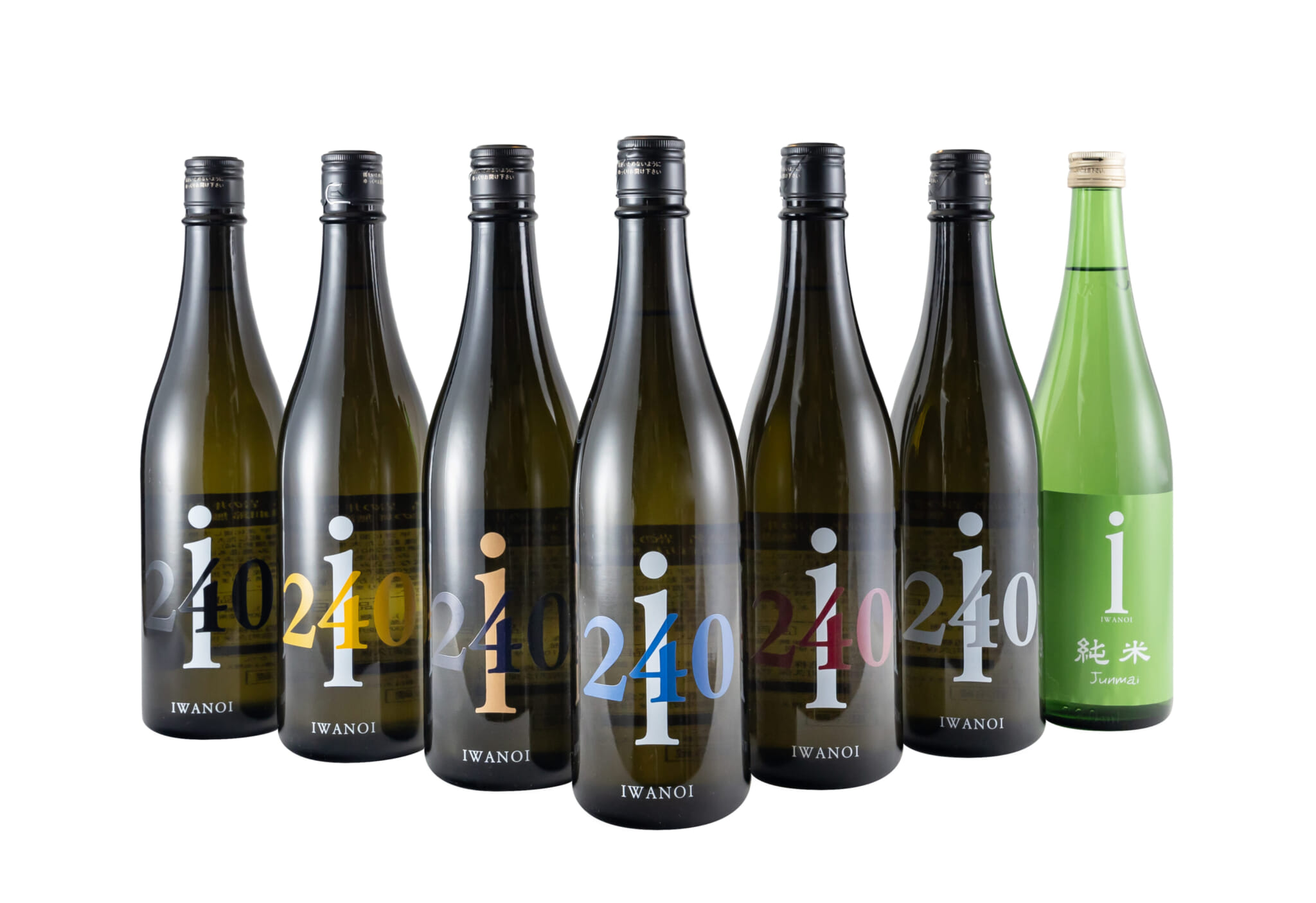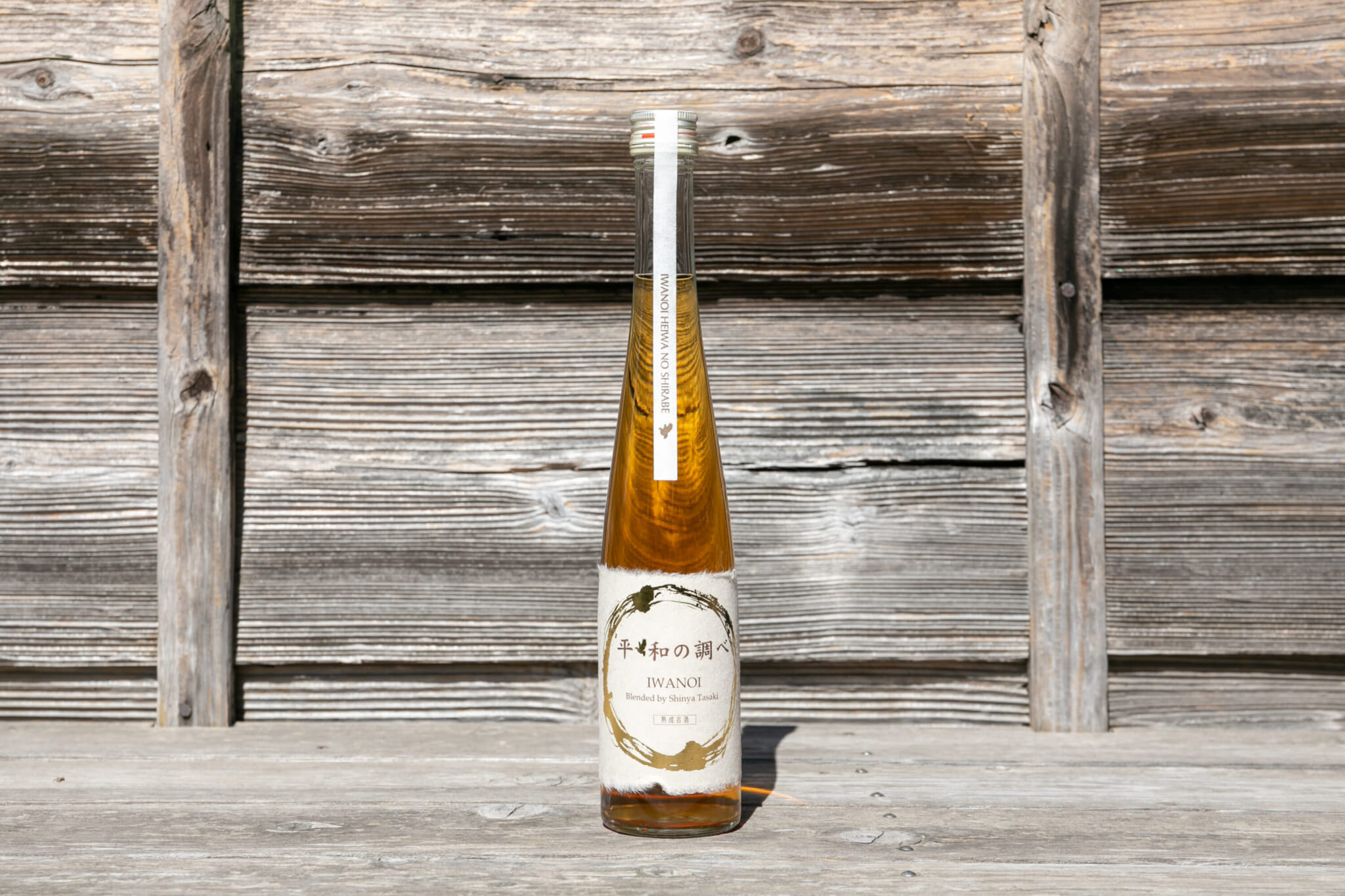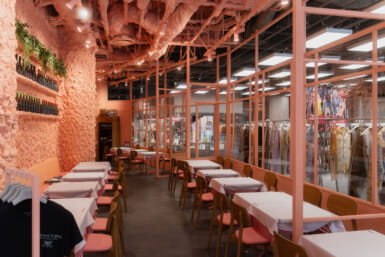It’s not only fine wine that gets better with age. Vintage sake, known in Japan as koshu or jukusei koshu, is also well worth waiting for when prepared properly. The problem is that it’s not always so easy to get hold of. This is mainly because the brewing process is so complicated and unpredictable as it relies heavily on certain weather conditions. As a result, the vast majority of companies — more than 99% — stick only with sake made to be drunk young. Fortunately, though, there are a few places that take up the challenge of producing mature bottles. This includes the multiple award-winning Iwase Sake Brewing Co. Ltd, a fascinating brewery with an intriguing history that dates back three centuries.
Located near the ocean in the picturesque town of Onjuku in the southeastern part of Chiba Prefecture, I recently visited the premises to try and gain a better understanding of the brewing process, get a feel for the history of the place, chat with the brewery’s chairman, Tomoki Shono and, best of all, sample some of the company’s products. The brand is Iwanoi (stylized as IWANOI), which has quite a reputation in Japan. It’s fair to say, it didn’t disappoint. I’m certainly no sake connoisseur, but I have tasted a wide range of brands in this country and Iwanoi is unquestionably one of the best I’ve ever tried. The company produces a mix of young and aged sake, though it is the latter that stands out most.
Aged Sake
Iwase’s history with koshu goes back several decades. Seen as a premium item during the Edo period (1693–1868), it was eventually phased out in Japan as taxes were too high. In recent years, it has seen a bit of a renaissance with the Chiba-based maker leading the way. In the 1930s, Iwase began brewing ginjo-shu (premium sake using rice that’s been polished to at least 60%), not to put it on the market, but rather to enter into competitions for technical development purposes. The sake was subsequently kept in storage and after around a decade, staff noticed that the drink had completely transformed. As well as having a beautiful amber color, it also had a very pleasant aroma and a full-bodied taste with a wide range of umami. In the 1960s, the company began producing aged sake to sell. It proved a wise decision.
As previously mentioned, I have drank quite a bit of sake during my time in Japan, but never any koshu, so I wasn’t sure what to expect. This was my first experience, and it began with Iwanoi’s Hizou Koshu 20-Nen, which translates to treasured old sake brewed for 20 years. Flavorsome and refreshing, it was different from anything I’d tasted previously. Boasting the right amount of sweetness, the vintage sake went down the gullet much more easily than I had anticipated. After knocking back a few glasses, it became clear why this drink had received so many accolades, including the Brussels International Competition Platinum Prize in 2018, the International Sake Challenge Gold Prize in 2020, and the Concours des Féminalise Gold Prize for two years consecutively.
According to Shono, it’s a beverage that pairs well with a wide variety of dishes both from Japan and abroad, including sukiyaki, Peking duck, and grilled Spanish mackerel. I had mine with a sweet strawberry mochi dish and it was magnificent. That same snack also paired superbly with the next aged sake I tried: Heiwa no Shirabe. A smooth drink with the perfect blend of sweet and sour, it was created by Shinya Tasaki, the first and only Asian national to win the Best Sommelier of the Year Award. Trying his original creation, one can quickly recognize why he is so highly revered. Recipient of the London Sake Challenge Platinum Award in 2020, it’s a special liquor that mixes six kinds of aged sake.
Going one step further with a blend of seven kinds of vintage sake is Iwanoi’s premium liquor Amaterasu (stylized as AMATERASU). Named after the goddess of the sun in Japanese mythology, it was brewed by producer Takahisa Uesugi, a descendant of Kenshin Uesugi, one of the most powerful warlords of the Warring States period (1477–1573). Going in a slightly different direction, he wanted to produce a drink with a deeper taste than Heiwa no Shirabe. It includes one sake brewed more than 50 years ago and another brewed 40 years ago. The other five types then balance out the flavor. Uesugi said it was “like decorating a sponge cake with cream before adding five fruits.” Unfortunately, I didn’t try this one, but it looks like it would make for a fantastic gift. The picture on the label and box, designed by Naru Miyamoto, is gorgeous.
International travelers rejoice: You pick up a bottle of Iwanoi sake at duty-free shops inside Narita Aiport.

Unique Water
Iwanoi is about more than just aged sake, though. The main thing that sets it apart from other brands is undoubtedly its mineral-rich groundwater. While the water in Japan tends to be softer than in most nations around the globe, the type used for making sake at Iwase passes through a stratum of seashells, giving it a hardness of around 240 degrees. This makes it one of the hardest waters used for brewing in the country and, as a result, it produces drinks full of magnesium and calcium, both of which have several health benefits. The bitter taste that comes from these rich minerals mixed with the sweetness of the rice, helps to create flavors that are complex, powerful and exciting to drink.
Next up was some i240 made using Omachi, a very tall sake rice that gave the drink a rich and earthy taste as well as a noticeable herbal astringency. Like the Yamada-Nishiki one, it went down very easily. As did the third i240 drink, which was made using Tamasakae sake rice. This one had a soft and smooth taste with a crisp finish. All three of the drinks naturally pair well with Japanese dishes, particularly seafood such as abalone, which is a specialty in the area. Shono, though, was keen to point out that, because of the high mineral content, they also go very nicely with international dishes that may surprise people, such as steak and the Italian cuisine acqua pazza.
Iwase has such a distinguished reputation because the company is so effective at bringing out the flavor of the rice in its drinks. It achieves this by using the Yamahai method for brewing more than a third of its sake, which basically means the produce is left to ferment naturally rather than adding lactic acid. This method is used for Iwanoi’s luxury drink, Yamahai Junmai Daiginjo. The problem with this one is that it is too popular and subsequently often sold out, hence why I didn’t try it. Said to have a mild aroma and a clean, delicious flavor, it won the Gold Prize at the London Sake Challenge in 2019 and three years earlier received an incredible 95 points on the Robert Parker 100-point scale. Anything over 90 is considered outstanding.

Steeped in History
In addition to its products, what makes Iwase so special is its history. On September 30 of this year, it will turn 300. It’s a hugely impressive feat for any company to survive a century, never mind three. For Shono, it’s about embracing traditions while at the same constantly looking to innovate to ensure the Iwanoi brand doesn’t get left behind. It’s a forward-thinking company with a proud past. Walking around the brewery, you can get a sense of that past, particularly when you see the thatched roof building. The beams of the main structure, I am told, are made from the mast of a Mexican galleon that was shipwrecked off the coast of Onjuku more than 400 years ago.
The vessel, named “San Francisco,” was heading from the Philippines to New Spain (Spanish Mexico), when, in the early hours of March 30, 1609, it ran aground and washed up on the beach. Of the 373 on board, 56 passed away. The 317 survivors were rescued by the villagers of Iwawada (modern day Onjuku). They were then able to leave for Mexico on a ship provided by the shogunate and this helped to build friendly relations between the two countries. This wouldn’t have been possible without the tremendous effort of the town’s female shell divers, known as ama in Japanese. They reportedly picked the stranded sailors from the cold sea and warmed them up with their own hands.
These shell divers have played an important role in Onjuku’s history, helping to boost the local economy by gathering popular seafood ingredients such as abalone, turban shell and spiny lobster. Shono’s grandfather, Sadayuki Iwase, began taking pictures of some of these divers before World War II and went on to win the Prime Minister’s Award at an exhibition sponsored by the Mainichi Shimbun. Her work can be seen in a delightful little exhibition in an old hospital building located on the brewery’s grounds. One of the rooms upstairs was used for a scene in the film From Siberia with Love, a true story about a Japanese prisoner of war detained in a Siberian gulag.
After looking around the facilities, it was then just a short drive to the beach. Sadly, it was an overcast day, but it was easy to see why Onjuku has become such a popular destination for city dwellers in the summer (Tokyo is less than 80 minutes away by train). The rainbow-colored town sign sits proudly on the white sand, making for a great picture. The water there is also said to have fantastic waves, attracting many surfers. Seafood is another reason to visit the area, especially spiny lobster, which was the highlight of my sumptuous dinner at the sushi restaurant Kanehachi. Of course, the food was washed down with some Iwanoi sake. This was my first time visiting Onjuku, but I’ll certainly be back. It’s a sleepy yet charming town with some delightful food and liquor.
For more information and the brewery’s full lineup, visit the Iwanoi website. Iwanoi will hold a tasting event at Fa-So-La Tax Free Akihabara inside Narita Airport (third floor in the South Wing of Terminal 1) between July 21 and 23, 2023 between 9am and 6pm.











